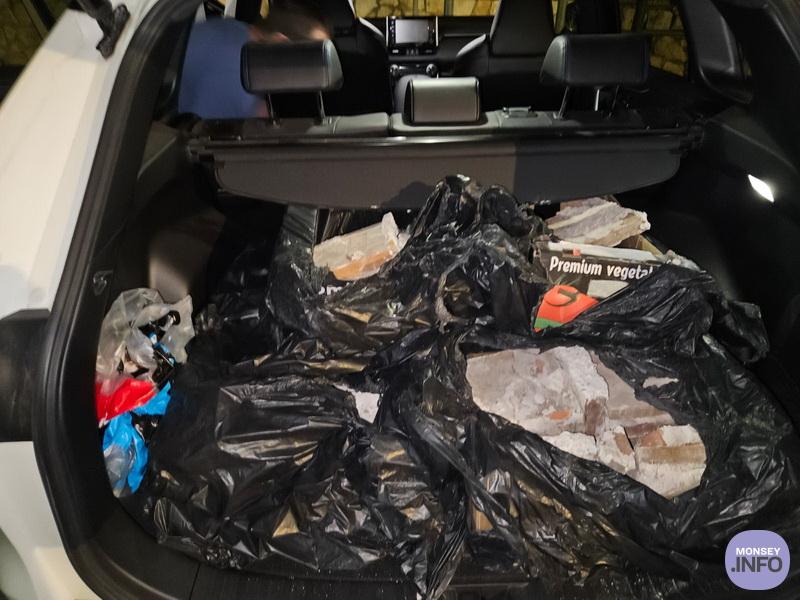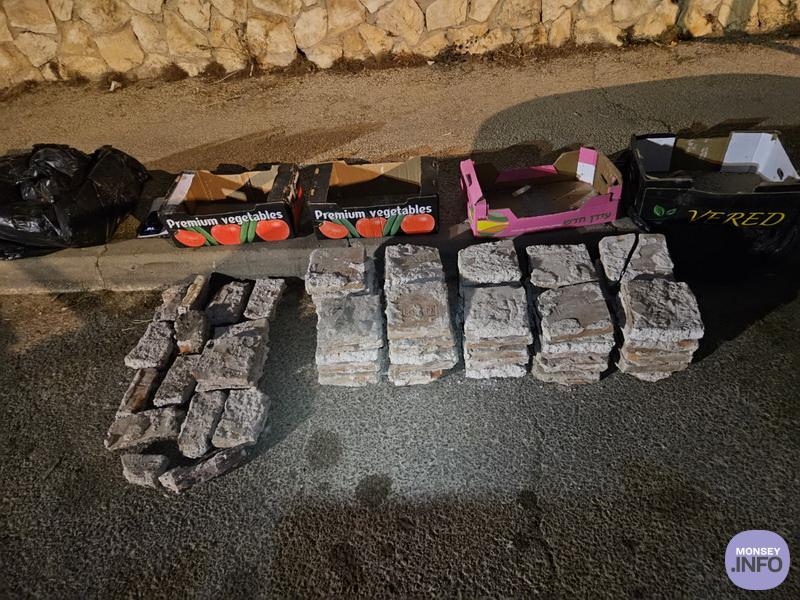
2,000 Year Old Roman Clay Paving Bricks Recovered In Israeli Operation
Dozens of ancient clay paving bricks with imprints of the 10th Roman legion, that destroyed Jerusalem almost 2000 years ago, were discovered in a car by Jerusalem Police detectives during an operation.
During an operational activity led by the Jerusalem Police Department, detectives in the Beit Hanina neighborhood found several covered cartons in the trunk of a vehicle, which aroused the suspicion of the police. Upon inspection of the contents, it became clear that they were archaeological findings. The police arrested the vehicle owner, who was also the suspect, and contacted the inspectors of the Theft Prevention Unit at the Israel Antiquities Authority.
When the inspectors arrived at the police station, they were amazed to discover that the suspect held dozens of ancient bricks in his vehicle that were roughly 2000 years old – from the Roman era, bearing stamps of the 10th legion, which established their military camp in the city after the 70 AD destruction. Evidence found on the bricks indicates that they were recently removed illicitly from an antiquities site in the area.
According to Amir Ganor, the Director of the Theft Prevention Unit at the Israel Antiquities Authority, “The bricks were used as part of the pavement of a public building; they may have been part of a furnace in a bath house that was used by soldiers of the Roman Legion. The 10th Roman Legion arrived in Israel in 6 BC and helped fortify control of the Roman kingdom in the land of Judah. Between the years 66-70 AD, the legion fought against the Jewish rebels in the Galilee, the Judean desert, and the Jerusalem area, eventually leading to the destruction of the Second Temple and the city. After the rebellion, the legion fighters defeated the last rebels in Masada (near the Dead Sea), after a long siege. After the uprising, the legion soldiers settled in the greater Jerusalem area, where they established workshops that made bricks unique to the legion. The seals of the legion – LXF – were imprinted on them, helping mark the distribution of the legion’s units throughout the country. The bulk of the distribution of bricks was identified in the Jerusalem area and in the Roman colony built on its ruins – ‘Aelia Capitolina’.
Afterwards, the 10th Legion continued to take part in the suppression of the Bar Kokhba rebellion and apparently, suffered heavy losses during the fighting.”
The tenth legion stayed in Judea until the end of the 3rd century AD, leaving behind public buildings and military camps. Ganor says, “It hurts to see that people would deface bricks of historical public buildings such as this one and tear away a piece of history for their own personal monetary gain.” The suspect was detained and interrogated. The Israel Antiquities Authority is examining his claim that the bricks originated from the Hebron area.
According to Eli Escusido, director of the Israel Antiquities Authority: “Discovering ancient bricks in the trunk of a car with fresh dirt on them, signs of breakage and displacement is heartbreaking, as another ancient site was looted and destroyed. If archaeologists had found the bricks on the site itself, we would have been able to gain much information for archaeological research, as well as add another archaeological site on the historical map of our country. Now, we are left to try and find out, through investigative operations, where the bricks were dismantled and looted from. The inspectors at the Israel Antiquities Authority work day and night to protect antiquity sites throughout the country from looting and destruction. We ask the public to help us report any signs of antiquities being stolen or damaged.”
Photography: Theft Prevention Unit, Israel Antiquities Authority













